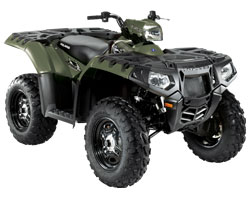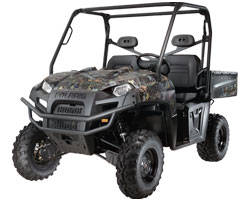Making Things Grow
One of the joys of food plotting is that it turns deer managers into farmers. The pride you’ll feel in creating and maintaining lush, nutritious food plots is a benefit that goes far beyond well-fed deer and better hunting opportunities. More than one hardcore food plotter has commented that bags of seed should come with a label that reads “Warning: Food Plotting is Addictive!”

Once your plots are cleared of trees, brush and grasses, it’s time to take a soil test. This is a critical step, as the pH (acidity) of soil will affect how well seeds can grow. Most soils are at least slightly acidic and will need an application of lime to help neutralize that condition. Using a shovel, dig a small scoop of dirt from several locations on your plot, then mix these samples together in a one-gallon plastic bag. You can take this soil sample to the local county agricultural extension office and submit it for testing. This test will reveal the pH level of your soil, as well as a recommendation for lime and fertilizer.
As you wait for your soil test, put that Polaris ATV to work plowing and discing your harvest plots. Working the soil will help kill weed growth and prepare a nice bed for your seeds. Then, using a pull-behind spreader, dispense the recommended amount of lime onto your plots and disc it in. If the extension agent has advised some fertilization, work that into the soil as well. You’ll have plenty of space to haul in bags of seed, fertilizer and other equipment on the Lock & Ride ™ Cargo Box.
Now it’s time to get some seeds in the ground. The biggest question facing most beginning food plotters is “What do I plant?” and the question is a difficult one. Plants can be divided into two neat categories; annuals (plants that grow for a season and then die) and perennials (plants that maintain growth for several seasons). For example clover—high in protein and capable of providing tons of forage—is a perennial that deer love. However, it can require more soil preparation and the proper conditions to do well. This can make annuals—like oats, wheat, brassicas and others—an excellent choice. Here again, talking to local food plotters, farmers, wildlife biologists and/or extension agents can be an invaluable step for deciding which plant types are right for your situation. Remember, seeking the advice of qualified people can save you lots of mistakes and hours of labor!
Once you’ve chosen a seed, take the time to read planting instructions and familiarize yourself with the seeder you’ll use. Knowing the size of your area, the proper seeding rate for your seed mixture and how your seeder disperses seed will help you get adequate coverage of your plot areas. Also take the time to read any instructions on finishing your plot after seeding. Many food plot seeds are tiny and a common error is discing over them or somehow burying them too deep. Normally a light drag or cultipacker is all that’s needed to finish your plot, and these implements are easily run behind your Polaris ATV with a 1,000-pound towing capacity. To Schedule a TeST ride, go to polarisindustries.com
ADVERTISEMENT
Related Vehicles
The Polaris Sportsman® 850 XP
Sportsman XP Facts:
- 850 SOHC Twin EFI Engine
- Available Electronic Power Steering
- Legendary Smooth Rolled Independent Rear Suspension (IRS)
- Superior Ergonomics
Learn More about the Sportsman XP >>
The Polaris RANGER 800 XP®
Ranger 800 XP Facts:
- New! 800 Twin EFI Engine
- Available Electric Power Steering
- Dual A-Arm Front Suspension
- Legendary Smooth Independent Rear Suspension (IRS)
Deer Management Archive
Deer Population by State
Weekly QDM Tips
Take a camera survey of your herd in the pre-season. Mount trail cameras near high-traffic deer areas such as mineral licks, food plots, or fence crossings. Record the number, sex and approximate age of every deer you “shoot”, then compare that data with your field observations come hunting season.







